JTF (just the facts): A total of 33 works, representing three bodies of work, displayed on three floors of a townhouse. The objects are divided as follows 1) snapshots re-photographed, unmatted and framed behind Plexiglas; they are printed in one of three processes (20 gelatin silver, 13 pigment, 11 Cibachrome); 2) 8 stacks of hardcover books, arranged as single columns or in snaking lines of various heights; and 3) black-and-white and color photographs (50 gelatin silver, 77 Cibacrhome) arranged in grids of 9 or 10 prints. The photographs vary from roughly 8×10 inches to 20×24 inches, and are issued in editions of 6+2AP. All of the works are dated 2016. (Installation shots below.)
Comments/Context: Sometimes it helps to read what artists (or galleries) write about what they’re exhibiting; sometimes their words only lead you astray or indicate they haven’t done what they set out to achieve.
The press release for Zoe Leonard quotes her saying that the work in her new show explores “statelessness as both an individual experience and a shared social condition.” Without this crib sheet, however, I doubt I would ever have concluded that the assortment of items she has placed carefully around the gallery were supposed to elucidate an idea so newsworthy and momentous.
One of Leonard’s strengths as an artist is her low-tech abstemiousness, the refusal to be flashy or with-it, so much so that a few years ago she began taking photography back to its origins in the camera obscura.
It is admirable therefore that her show is built on a skeletal budget and with common materials: snapshots from the 1940s of her grandmother, mother and great aunt who left Poland after World War II and were stateless in Europe for a decade before emigrating to the U.S.; “how-to” photo books from the analog era; and photographs of pigeons circling the sky above the buildings in her New York City neighborhood.
What isn’t so exemplary is the failure of these elements to coalesce and appear related, much less evoke the worldwide sufferings and perpetual disorientation of refugees.
The first artwork on the ground floor gallery is a stack of 46 books titled This is Photography. The mundane purposes (and inadequacies) of the medium have long been one of her preoccupations, and she further elaborates on that theme in the family snapshots that have been rephotographed, in certain cases so imperfectly that the figures in the images are obscured.
In the press release, Leonard is quoted as saying: “We live in a country primarily of immigrants, and that informs who we are. While each of us has a different relationship to that fact, and a different family narrative, the experience figures deeply in our collective background.”
Vernacular photos have provided artists with a flexible platform for personal and historical musings–and scholars and critics with theoretical food to chew on–since at least the 1960s. The “snapshot aesthetic” of street photographers and “Notations in Passing,” the seminal lecture and essay by Nathan Lyons, made the particulars of the style a relevant topic. The emotional resonance of the snapshot has only magnified since the 1980s. Christian Boltanski, Alfred Jaar, Richard Prince, Adrian Piper, Rachel Harrison, and Leslie Hewitt are only a handful of the many who have integrated unprofessional magazine or family images, or humble self-portraits, into their cultural explorations.
Leonard’s use of snapshots thus don’t take us anywhere we haven’t been before. Even more confusing is the connection we’re supposed to find between these photographic relics from her multi-generational personal history and copies of photo guides from the 1950s, ‘60s, and ‘70s. Leonard has arranged some of these manuals, with titles such as Total Picture Control or The Picture Universe or Kodak’s How to Take Good Pictures, in long uneven stacks, like a city skyline. Her longstanding respect for obsolescent things explains their presence up to a point. But the campy tone of the jacket illustrations—young white optimistic Americans, marketing the ease and perfection of photography for the masses—is jarringly at odds with the somber story, told in the snapshots, of her mother’s family wandering around Europe.
On the top floor of the gallery, Leonard has installed 13 grids of photographs—entire rolls of film printed three across and four down. The images are dated 2006/2016, an indication they were snapped a decade ago. Taken from her apartment rooftop, they consist exclusively of distant building cornices, blank patches of sky, and pigeons in flight or perched on the rooftop ledge.
The simple, unpredictable patterns of urban birds as they flock and wheel in the air are like the photographs made a few years ago by Robert Adams of seabirds along the Oregon coast, except that her prints are without his lyric eloquence. It’s touching that she has willingly exhibited her unpolished, amateurish views of city life. That doesn’t though make her prosaic exercises in observation especially interesting.
Why should it be photography’s fault, and not the artist’s, that Leonard’s old snapshots and books don’t create a gripping historical narrative commensurate with the daunting task she has set herself? It’s a good question, and one that this garbled exhibition can’t answer.
Collector’s POV: The photographs in this show are priced between $30000/$35000 (for the single images) and $85000 (for the 5 image group). The book sculptures range from $40000 to $150000. Leonard’s prints have been only intermittently available in the secondary markets in recent years, with not enough public transactions to chart a useful price history. As such, gallery retail likely remains the best option for those collectors interested in following up.

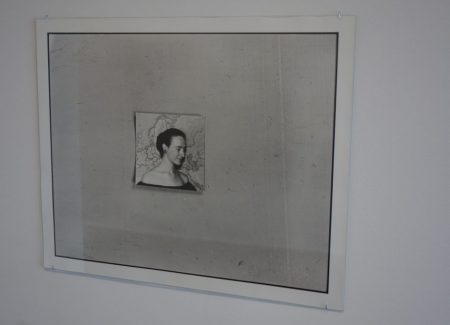
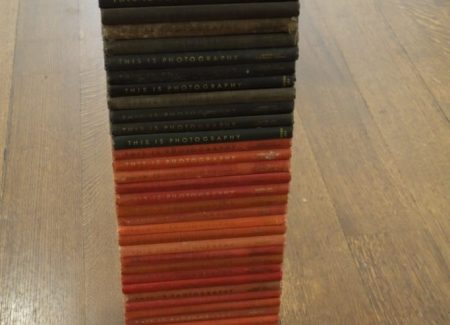







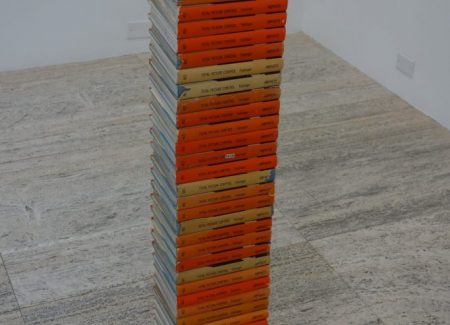

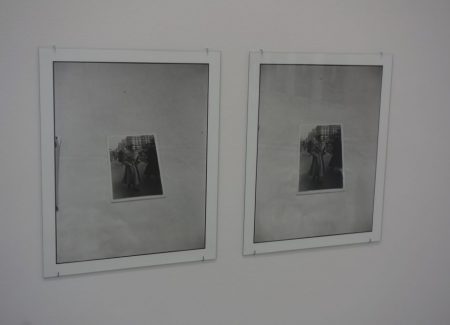
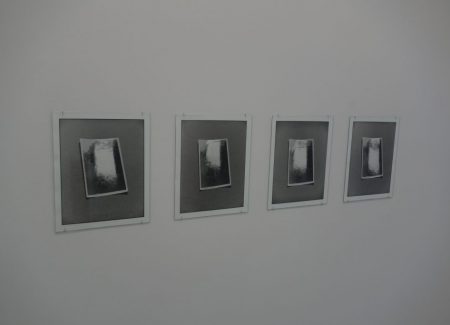

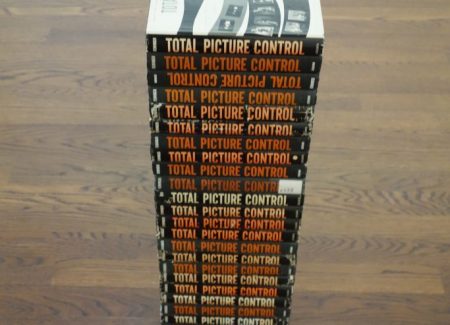
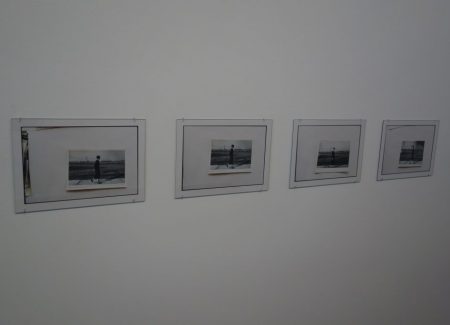

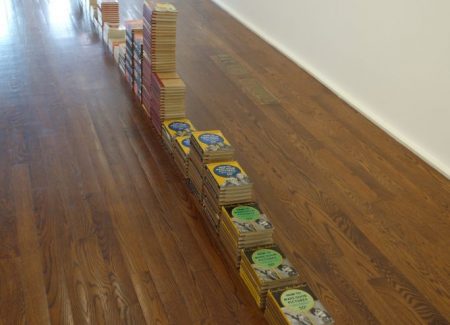
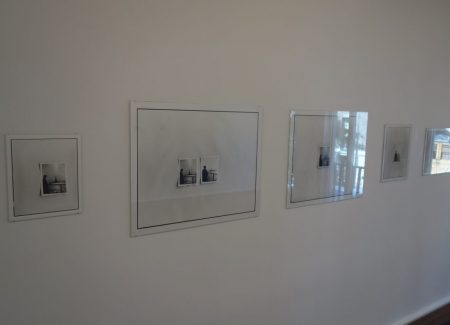
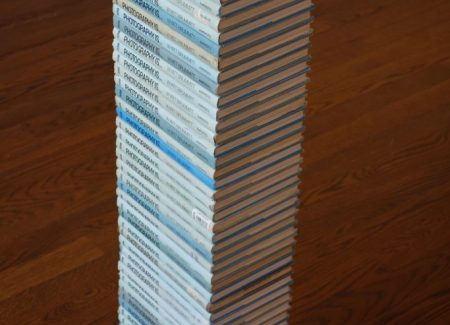
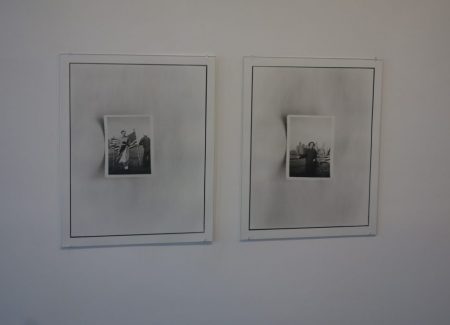
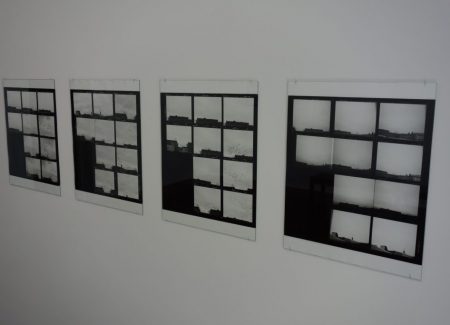




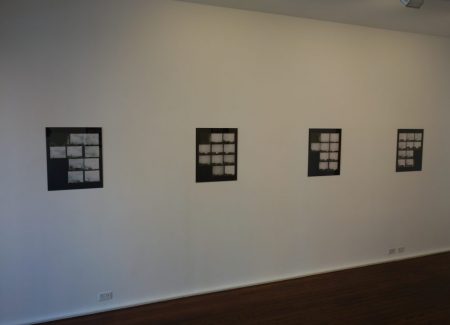





Well reasoned and candid review.
Edition/pricing info is rarely if ever reflected on in your reviews and no doubt for good reason, however in this instance the pricing is so jarring that for once I wish you’d break with tradition to give us your two cents.
Failing that, perhaps you might follow-up with a photo of the inevitable aftermath of when”book sculpture” meets toddler? ;-))